Share
Discover the true cost of Australian school zone premiums. Expert analysis of property prices, capital growth, and financial planning for education access.
For many Australian families, the decision to buy a home extends far beyond bedrooms, bathrooms, and backyards. Increasingly, parents are paying substantial premiums to secure properties within the catchment areas of high-performing public schools, with some paying upwards of $1.3 million more than comparable homes just streets away.
Recent data from Cotality reveals that buyers across Sydney and Melbourne are willing to pay six-figure premiums for school zone access, viewing these purchases as strategic investments that eliminate the ongoing burden of private school fees. Yet the financial reality proves more complex than many families anticipate.
This comprehensive analysis examines the true cost of school zone premiums, their impact on long-term wealth building, and how families can make informed financial decisions when education access becomes a property purchase driver. We’ll explore whether these substantial upfront investments deliver the expected returns and how they fit within broader family financial planning strategies.
Understanding school zone premiums across Australia
To make informed decisions about school zone investments, families must first understand the current market landscape and how premiums vary across different regions and property types.
School zone premiums represent the additional amount buyers pay for properties within the catchment boundaries of sought-after public schools compared to similar properties outside these zones. Property prices in popular school zones across Australia have outperformed by as much as 10%, with some areas commanding significantly higher premiums.
The most substantial premiums exist in Sydney’s prestigious North Shore region, where homes inside the combined catchments of Killara High, Willoughby Girls, and Lindfield Learning Village carried a median value nearly 40 per cent higher than similar properties outside the zones. This translates to a staggering $1.3 million premium for comparable properties.
| Location | School/Zone | Premium Amount | Premium Percentage |
|---|---|---|---|
| Sydney North Shore | Killara High/Willoughby Girls/Lindfield | $1,300,000 | 40% |
| Melbourne | Princes Hill/University High | $357,000 | 26% |
| Melbourne East | Glen Waverley Secondary (houses) | $500,000-$700,000 | 35% |
| Melbourne East | East Doncaster Secondary (apartments) | $277,500 | 36.8% |
| Melbourne East | Balwyn High School (units) | $273,000 | 33% |
| Sydney | Cherrybrook Technology High | -$155,000 | Discount |
| Melbourne | Doncaster Secondary College | -$48,000 | Discount |
Melbourne’s market shows similarly dramatic variations. Properties in the zones for Princes Hill and University High School commanding a $357,000 premium compared to nearby homes outside the boundary. The city’s eastern suburbs demonstrate even more extreme examples, with properties inside the GWSC “golden triangle” command huge premiums: a typical house in-zone can cost $500–$700k more than a similar house just outside the zone.
These premiums extend beyond houses to apartments and townhouses. East Doncaster Secondary College, where in-zone apartments command a 36.8% premium, amounting to a difference of $277,500 compared to apartments just 1km away. Even prestigious schools like Balwyn High School see units within their catchment selling for nearly $273,000 more than those outside.
The geographical specificity of these premiums creates stark contrasts between neighbouring streets. Properties that fall just metres outside school boundaries often represent relative bargains, while those within zones face intense competition from families prioritising education access above other property features.
Regional variations and emerging patterns
While Sydney and Melbourne dominate premium school zone headlines, patterns across other Australian capitals reveal different opportunities and risks for families considering education-focused property investments.
Queensland emerges as a standout performer in school zone growth. Of the 20 best school zones in Australia for price growth, 16 are from Queensland, with seven of the top 10 primary school catchment zones from Queensland. This trend reflects the state’s broader population growth and infrastructure development, particularly around Brisbane’s preparation for the 2032 Olympics.
Perth has demonstrated significant school zone premium growth, with some catchments experiencing up to 35 per cent house price growth year-on-year. The Como Primary School zone recorded a 35.6 per cent increase to a median of $901,750, while the Armadale Senior High School zone increased 32.7 per cent to $325,000.
These regional patterns highlight important opportunities for both owner-occupiers and investors seeking value in school zone markets outside the traditional Sydney and Melbourne premium areas.
Interestingly, not all popular school zones command premiums. Houses in the Cherrybrook Technology High School catchment were $155,000 cheaper than similar homes nearby but outside the zone. Similarly, homes inside the Doncaster Secondary College catchment carried a $48,000 discount.
These anomalies often represent opportunities for savvy buyers willing to research emerging school reputations before broader market recognition drives premiums higher.
The true cost of education in Australia
Having established the premium landscape, families need to evaluate whether these upfront investments make financial sense compared to alternative education pathways.
Key Statistics Summary
- School Zone Premiums: Range from $200,000 to $1.3 million
- Private Education (13 years): $350,158 in major cities
- Public Education (13 years): $123,294 including all costs
- Capital Growth Impact: 6 of 9 premium zones underperformed by 15-25%
- Family Multiplier: Private costs increase per child; zone premiums remain constant
Understanding school zone premiums requires examining the alternative cost of private education. The average cost of putting a child through public school from Kindergarten to Year 12 in a major city is more than $123,000 for a child starting their education at a government school in 2025. This figure includes not just voluntary school contributions but also uniforms, equipment, excursions, and tutoring.
| Education Type | Major Cities | Regional Areas | Key Components |
|---|---|---|---|
| Public School | $123,294 | $81,141 | Fees, uniforms, equipment, tutoring |
| Catholic School | $193,666 | $153,144 | Tuition + ancillary costs |
| Independent Private | $350,158 | $244,075 | Full fees + extras |
| Elite Private (Year 12) | $24,000-$50,000/year | $18,000-$35,000/year | Tuition only |
Private education costs significantly more. Catholic and independent schools come with even heftier fees, costing a respective $193,666 and $350,158 in major cities. For families with multiple children, these costs multiply rapidly. Private school tuition fees vary considerably across Australia; however you may expect to pay anywhere between $24,000 and $50,000 for a Year 12 day student attending an established, well regarded metropolitan private school in 2025.
The financial pressure of private school fees has intensified. The trend over recent years had been for the increase in private school fees to significantly exceed wage and wider inflation, and while this paused during the Covid pandemic, this trend has strongly re-emerged in 2025. This escalation makes school zone premiums increasingly attractive as one-off investments rather than ongoing fee commitments.
Beyond tuition fees, private education involves numerous additional costs. Non Interest Bearing Loans, Building Levies, Compulsory purchase of IT equipment, International Baccalaureate levies often $2000+ per annum, Additional subject costs eg. music, language, sports tuition all contribute to the total investment required.
For families facing these education costs, purchasing within a quality public school catchment represents a strategic financial decision. While the upfront property premium may seem substantial, it offers several advantages over ongoing private school fees: the investment builds equity rather than representing pure expenditure, mortgage payments decrease in real terms due to inflation, and the property potentially provides capital growth alongside education access.
Capital growth analysis and investment performance
The relationship between upfront school zone costs and long-term property returns reveals one of the most surprising aspects of education-focused property investment.
The relationship between school zone premiums and capital growth reveals surprising patterns that challenge conventional wisdom about education-focused property investment. Most leading school catchment areas carry a premium and are dearer than similar suburbs nearby.
As a result, residential properties inside these districts are actually weaker performers than the broader market because they have already been priced so high.
Research from Cotality examining nine major school catchment areas found that for six of the nine areas that we analysed, we found that the 15-year capital growth was lower than outside the catchments. This pattern emerged consistently across premium zones where high entry costs appeared to limit future growth potential.
| Location | In-Zone Growth | Out-of-Zone Growth | Performance Gap |
|---|---|---|---|
| Sydney North Shore | 126% | 150% | -24% underperformance |
| Melbourne (Princes Hill/Uni High) | 82.6% | 106.3% | -23.7% underperformance |
| Queensland school zones | +10% above suburb average | Baseline | +10% outperformance |
| Perth school zones | +35% growth | Market average | Strong outperformance |
| Melbourne emerging zones | Variable | Variable | Mixed results |
| Brisbane school zones | +25-35% growth | Market average | Strong outperformance |
The North Shore Sydney example illustrates this phenomenon clearly. Despite commanding a $1.3 million premium, homes inside the catchment grew 126 per cent over 15 years, compared to 150 per cent in neighbouring areas just outside the school boundary.
Similarly, in Melbourne, properties within the sought-after catchments of Princes Hill and University High saw 82.6 per cent growth over 15 years. Nearby homes outside the zone delivered 106.3 per cent over the same period.
This performance gap suggests that while school zones maintain strong demand, their premium pricing may limit capital appreciation potential. Properties entering these markets at peak valuations may struggle to achieve superior returns compared to nearby areas offering similar lifestyle benefits without the education premium.
However, the picture varies significantly across different markets and timeframes. Most school catchment zones were able to post gains of 10% more than their respective suburbs, indicating that performance depends heavily on market timing, location, and the specific school’s reputation trajectory.
Market cycle timing and opportunity identification
Successful school zone investment often depends on identifying emerging opportunities before premiums become established. Some areas like Dromana Secondary College, Koonung Secondary College, and Montmorency Secondary College are showing the opposite trend: properties within the catchment are cheaper than those just outside. These reverse premiums may indicate future growth opportunities as school reputations develop.
The timing of school zone investment within broader property cycles significantly affects outcomes. During market upswings, school zone premiums often expand as competition intensifies among families with strong purchasing power. Conversely, during market corrections, these premiums may contract as affordability constraints force families to compromise on education access.
Regional markets often provide better value propositions than established metropolitan school zones. While these areas have all experienced growth, most are well under their capital cities’ median house prices bringing to light the impact of the past years’ cost of living environment. This creates opportunities for families willing to relocate for both affordability and education access.
Financial planning implications for families
Understanding capital growth patterns helps inform the broader financial planning decisions families face when weighing school zone investments against alternative strategies.
The decision to pay school zone premiums involves complex financial trade-offs that extend beyond simple cost comparisons between premiums and private school fees. Families must evaluate not only the immediate financial impact but also long-term wealth building implications, cashflow management, and opportunity costs of capital allocation.
Mortgage repayments on school zone premiums behave differently from ongoing school fees. While private school fees represent a continuous drain on household cashflow, mortgage payments decrease in real terms over time due to inflation and typically benefit from tax deductibility for investment properties. This fundamental difference affects long-term financial planning strategies.
For families with multiple children, the mathematics become more compelling. Private school fees multiply with each child, while school zone premiums remain constant regardless of family size. A family with three children facing $350,000 in private school fees per child confronts a potential $1.05 million education bill, making even substantial school zone premiums financially attractive.
The timing of purchases relative to children’s ages also affects financial planning. Families purchasing when children are very young benefit from longer amortisation periods for school zone premiums, while those buying closer to school age face more immediate pressure to justify the investment through education access rather than long-term capital growth.
Cash flow management represents another critical factor. Private school fees require consistent monthly payments throughout the school year, creating ongoing budget pressure. School zone mortgage premiums integrate into existing housing costs, potentially simplifying household financial management while building equity.
Risk assessment and mitigation strategies
While school zone investments can deliver education access and potential financial benefits, families must understand and plan for specific risks that differ from traditional property investment considerations.
School zone investment carries specific risks that families must understand and plan for. School zone boundaries can change, sometimes due to government policies or shifts in population. These boundary changes can dramatically affect property values, with homes suddenly falling outside desirable catchments experiencing value declines.
Demographic shifts also affect school zone values. Areas experiencing population growth may see school zones shrink to manage enrolment numbers, potentially excluding properties previously within boundaries. Conversely, declining populations may lead to school closures or zone expansions that could benefit previously excluded properties.
The concentration of investment in a single property for both housing and education access creates geographic risk that diversified investment portfolios typically avoid. Families making substantial school zone investments should ensure their broader financial planning maintains appropriate diversification across asset classes and geographic regions.
Economic cycles affecting property values can impact school zone premiums differently than broader markets. During downturns, luxury spending categories like premium education access often face disproportionate pressure, potentially leading to larger premium contractions in school zones compared to general property markets.
Alternative strategies and implementation approaches
For families finding school zone premiums financially challenging or strategically unwise, several alternative approaches can achieve education goals while maintaining financial flexibility.
Families unable or unwilling to pay substantial school zone premiums have several alternative strategies worth exploring. Renting within desirable school zones allows education access without the capital commitment, providing flexibility for families uncertain about long-term residency plans or those preferring to invest capital in diversified portfolios.
This approach can prove particularly effective for families who wish to invest the premium difference in higher-returning assets while still securing education access. The rental strategy provides geographic flexibility and eliminates exposure to school zone-specific property risks.
Some families pursue staged approaches, purchasing in emerging school zones before widespread recognition drives premiums higher. This strategy requires careful research into school performance trends, infrastructure development, and demographic patterns that may affect future demand.
Investment property strategies can also provide education funding alternatives. Rather than paying school zone premiums for principal residences, families might purchase investment properties in growth areas, using rental income and capital appreciation to fund private education while maintaining geographic flexibility.
Geographic arbitrage offers another approach. Families willing to relocate to regional areas or smaller capitals often access high-quality schools without metropolitan premiums while benefiting from lower overall living costs and potentially stronger capital growth in emerging markets.
Professional guidance and implementation
Given the complexity and financial significance of school zone decisions, engaging qualified professionals becomes not just helpful but necessary for optimal outcomes.
The complexity of school zone investment decisions makes professional financial advice particularly valuable. Financial planners can model different scenarios, comparing school zone premiums against alternative investment strategies and education funding approaches based on family circumstances, risk tolerance, and long-term goals.
Mortgage brokers play crucial roles in structuring finance for school zone purchases, particularly when premiums require higher loan amounts or alternative lending solutions. Understanding serviceability requirements and optimising loan structures can significantly affect the feasibility and cost-effectiveness of school zone investments.
Property investment advisors can provide market-specific insights into school zone trends, helping families identify emerging opportunities or avoid overvalued markets. Their local knowledge often proves invaluable in understanding factors affecting school reputations and boundary stability.
Legal professionals should review school zone purchases carefully, ensuring buyers understand enrollment requirements, boundary definitions, and any factors that might affect future education access. Some schools have additional criteria beyond residency that could affect enrollment eligibility.
Technology and future market evolution
The education landscape continues evolving in ways that may affect school zone premiums. Online learning capabilities demonstrated during COVID-19 have expanded educational options, potentially reducing the importance of geographic proximity to specific schools. However, social and extracurricular aspects of school attendance maintain the relevance of physical school communities.
Government policy changes regarding school funding, catchment boundaries, and enrollment criteria can significantly affect school zone values. Families making substantial investments should monitor policy developments that might influence future education access or school performance.
Demographic trends, including migration patterns and birth rates, affect long-term demand for school zones. Areas experiencing sustained population growth may see ongoing pressure on school places, potentially increasing zone premiums. Conversely, areas with declining birth rates may experience reduced competition for school places.
Current market outlook and trends
Understanding where school zone markets are heading in 2025 and beyond helps families time their decisions and identify emerging opportunities.
The 2025 Australian property market presents a complex environment for school zone investment. Property prices are driven by a combination of factors, and as we move through property cycles, they all come together to influence whether property values rise or fall. Current conditions include elevated interest rates, affordability constraints, and strong population growth creating ongoing demand pressure.
This trend could indicate that private school fees in a time of escalating living costs and economic uncertainty have weighed on some household budgets, potentially increasing demand for quality public school access. This economic pressure may sustain or increase school zone premiums despite broader market challenges.
Regional variations continue shaping opportunities. Brisbane property prices surged by 12.1 per cent in 2024. While growth may moderate, Domain forecasts house prices will rise by 5-7 per cent and apartments by 7-9 per cent in 2025. This growth creates new opportunities in Queensland school zones while highlighting affordability challenges in established markets.
Perth’s continued strength, with Perth: Increases 8-10 per cent (houses and units) projected for 2025, suggests ongoing opportunities in Western Australian school zones, particularly given the state’s population growth and economic expansion.
Long-term wealth building implications
Beyond immediate education access, school zone investments affect family wealth building strategies in ways that extend across generations and investment timeframes.
School zone investment affects long-term wealth building in several ways beyond immediate education access. Property ownership within desirable school zones often provides intergenerational benefits, with properties potentially serving multiple generations of family education needs while building equity over extended periods.
The forced savings aspect of mortgage payments can benefit families who might otherwise struggle to accumulate education funding through voluntary savings programs. Regular mortgage repayments create discipline around education-related spending while building valuable assets.
Tax implications vary depending on whether school zone properties serve as principal residences or investment properties. Owner-occupied properties benefit from capital gains tax exemptions, while investment properties provide depreciation deductions and potential negative gearing benefits that can enhance overall returns.
Estate planning benefits include the potential for school zone properties to provide ongoing family benefits while serving as valuable estate assets. Properties in desirable school zones often maintain strong resale demand, providing estate liquidity when required.
Making the school zone decision
School zone premiums represent one of the most significant financial decisions Australian families face, with implications extending far beyond property ownership into wealth building, cashflow management, and long-term financial security. The evidence reveals a complex landscape where substantial upfront investments don’t always deliver expected returns, yet may still prove worthwhile for families prioritising education access.
Key decision factors include:
- Family size and timing: Families with multiple children or very young children typically benefit more from school zone premiums compared to those with single children or older students
- Financial capacity: The ability to service larger mortgages without compromising other financial goals remains crucial for sustainable school zone investment
- Market positioning: Emerging school zones often provide better value propositions than established premium catchments already priced for perfection
- Alternative strategies: Renting within zones or investing premium differences in diversified portfolios may deliver superior financial outcomes while achieving education goals
The research demonstrates that financial success with school zone decisions depends less on following conventional wisdom and more on aligning strategies with specific family circumstances and broader financial planning objectives.
Your immediate next steps:
- Assess your complete financial position including debt capacity, investment goals, and long-term wealth building strategies beyond education access
- Model different scenarios comparing school zone premiums against alternative education funding approaches based on your family’s specific circumstances
- Research emerging opportunities in school zones before widespread recognition drives premiums to unsustainable levels
- Seek professional financial advice from qualified financial planners who can integrate school zone decisions within comprehensive wealth building strategies
School zone investment decisions are too significant and complex for families to navigate alone. Professional financial advisors can provide personalised analysis factoring your income trajectory, risk tolerance, family planning, and broader investment portfolio requirements.
Whether you choose to pay substantial premiums for established school zones, seek value in emerging catchments, or pursue alternative education funding strategies, the key lies in making informed decisions aligned with your family’s complete financial picture rather than isolated education goals.
Contact a qualified financial planner today to explore how school zone factors fit within your comprehensive financial strategy and ensure your education investment decisions support rather than compromise your family’s long-term wealth building objectives.
Further questions
Is buying in a school zone worth the premium compared to private school fees?
How do school zone boundaries affect property values and what happens if boundaries change?
Do school zone properties provide better capital growth than other investment properties?
What are the main financial risks of investing in school zone properties?
When is the best time to buy in a school zone and how should families plan their purchase timing?
This is general information only and is subject to change at any given time. Your complete financial situation will need to be assessed before acceptance of any proposal or product.





